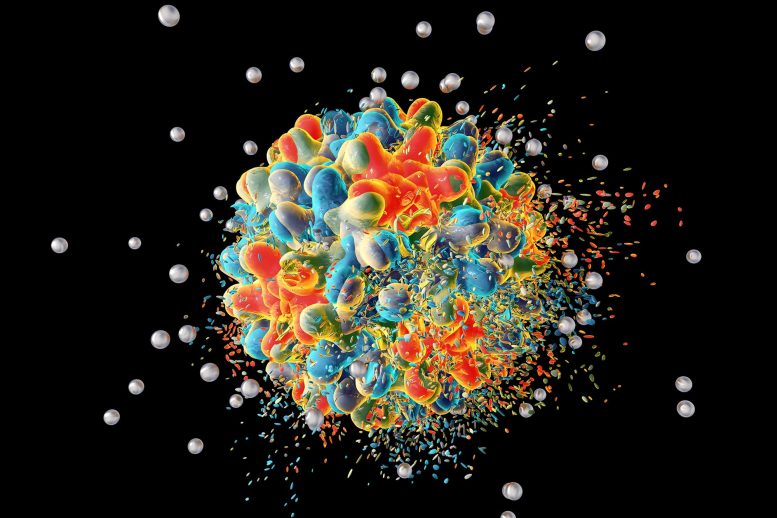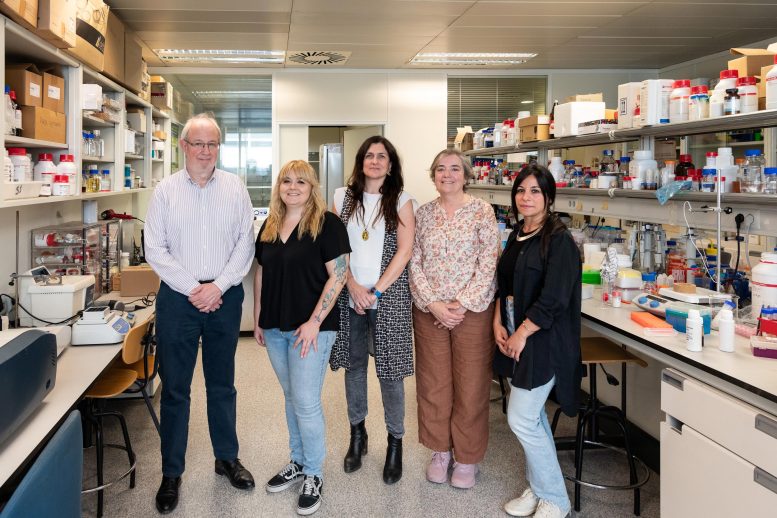Scientists Transform Cinnamon Into Nanotech Antimicrobials


Researchers at the Universitat Politècnica de València and CIBER-BBN have developed an innovative nanodevice using the antimicrobial properties of cinnamaldehyde from cinnamon oil, effective against pathogens like Escherichia coli and Staphylococcus aureus, with potential applications in food safety, healthcare, and more. Credit: SciTechDaily
Cinnamon oil-based nanodevice effectively targets key pathogens, with potential uses in healthcare and food safety
A team of researchers from the Universitat Politècnica de València (UPV) and the CIBER de Bioingeniería, Biomaterials y Nanomedicine (CIBER-BBN) has created an innovative antimicrobial nanodevice utilizing cinnamaldehyde, an essential oil component from cinnamon.
This “nano killer” has demonstrated considerable effectiveness in combating pathogenic microorganisms such as Escherichia coli, Staphylococcus aureus, and Candida albicans. The potential applications of this technology include pathogen elimination in food products, wastewater treatment, and the management of hospital-acquired infections.
Pathogen Impact and Application Methods
The pathogens targeted by this nanodevice can cause severe health issues. Escherichia coli strains, for example, are typically harmless but some can lead to significant abdominal pain, diarrhea, and vomiting. Staphylococcus aureus may cause skin and bloodstream infections, osteomyelitis, or pneumonia. Candida albicans, a fungus found in biological fluids, is known for causing diseases like candidemia and invasive candidiasis.
The researchers say this application of this “nanokiller” would be very simple: “For example, we could create a spray, make a formulation based on water and other compounds, and apply it directly. We could make a water-based formulation in the field and spray it directly, like any pesticide today. And in hospitals, it could be applied on bandages, and we could even try to make a capsule that could be taken orally,” explains Andrea Bernardos, a researcher in the NanoSens group at the Inter-University Institute for Molecular Recognition Research and Technological Development (IDM).
Enhanced Efficacy and Potential
The new nanodevice improves the efficacy of encapsulated cinnamaldehyde compared to the free compound: about 52-fold for Escherichia coli, about 60-fold for Staphylococcus aureus, and about 7-fold for Candida albicans.
“The increase in the antimicrobial activity of the essential oil component is possible thanks to the decrease in its volatility due to its encapsulation in a porous silica matrix and the increase in its local concentration when released due to the presence of the microorganisms,” said Bernardos.
The device stands out for its high antimicrobial activity at very low doses. In addition, it enhances the antimicrobial properties of free cinnamaldehyde with a reduction of the biocidal dose of around 98% for bacterial strains (Escherichia coli and Staphylococcus aureus) and 72% for the yeast strain (Candida albicans) when the nanodevice is applied.
“Moreover, this type of device containing natural biocides (such as essential oil components) whose release is controlled by the presence of pathogens could also be applied in fields such as biomedicine, food technology, agriculture, and many others,” concludes Ángela Morellá-Aucejo, also an IDM researcher at the Universitat Politècnica de València.
The results of this study have been published in the journal Biomaterials Advances.
Reference: “Remarkable enhancement of cinnamaldehyde antimicrobial activity encapsulated in capped mesoporous nanoparticles: A new “nanokiller” approach in the era of antimicrobial resistance” by Ángela Morellá-Aucejo, Serena Medaglia, María Ruiz-Rico, Ramón Martínez-Máñez, María Dolores Marcos and Andrea Bernardos, 26 March 2024, Biomaterials Advances.
DOI: 10.1016/j.bioadv.2024.213840



